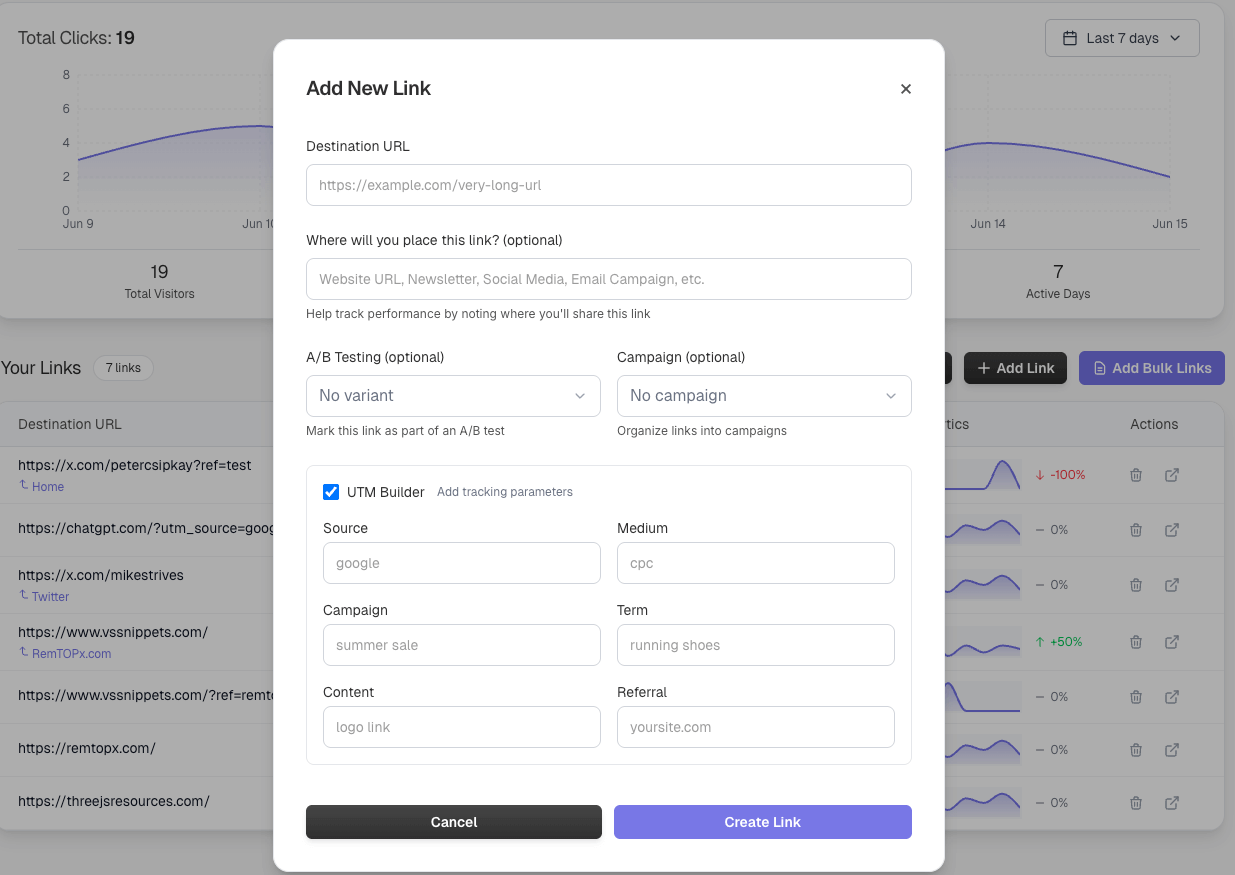UTM parameters are essential for accurate marketing attribution, allowing you to track which campaigns, sources, and content drive traffic to your website. UseClick's UTM builder simplifies the process of creating consistent, properly formatted tracking parameters.
With proper UTM implementation, you can definitively answer questions like "Which email campaign generated the most conversions?" or "Is social media or paid advertising more effective for our audience?"
This comprehensive guide covers everything you need to know about UTM parameters and how to use UseClick's builder effectively.
UTM Builder Interface
UseClick's UTM builder provides an intuitive interface for creating properly formatted tracking URLs:

The builder includes validation, suggestions, and templates to ensure your UTM parameters follow best practices.
Understanding UTM Parameters
UTM parameters are tags added to your URLs that help analytics tools identify traffic sources and campaign performance. Here are the five standard UTM parameters:
Required Parameters
utm_source
Identifies where the traffic comes from (e.g., google, facebook, newsletter)
utm_medium
Identifies the marketing medium (e.g., email, social, cpc, organic)
utm_campaign
Identifies the specific campaign (e.g., spring_sale, product_launch)
Optional Parameters
utm_content
Differentiates similar content or links (useful for A/B testing)
utm_term
Identifies paid search keywords (primarily for Google Ads)
Campaign Attribution Strategies
Effective UTM usage requires consistent naming conventions and strategic parameter choices. Here's how to build a systematic approach:
Naming Convention Best Practices
✅ Good Naming
- • Consistent format: lowercase with underscores
- • Descriptive but concise
- • No spaces or special characters
- • Date formats when relevant (2024_q1)
❌ Avoid These
- • Mixed capitalization (Facebook vs facebook)
- • Spaces or special characters
- • Overly long parameter values
- • Inconsistent date formats
Channel-Specific UTM Strategies
Email Marketing
Social Media
Paid Advertising
UTM Templates and Real-World Examples
UseClick's UTM builder includes pre-built templates for common marketing scenarios:
Email Newsletter Template
Social Media Campaign Template
Content Marketing Template
Common UTM Mistakes and How to Avoid Them
Inconsistent Parameter Values
Problem: Using "Facebook," "facebook," and "fb" for the same source
Solution: Create a standardized list of approved parameter values
Parameter Formatting
Problem: Using "spring_sale" and "spring-sale" interchangeably
Solution: Use consistent formatting (underscores preferred)
Campaign Naming
Problem: Using "q2_2024_spring_sale_email_campaign_version2"
Solution: Keep it simple: "spring_sale_2024_q2"
Date Formatting
Problem: Using "2024-q2", "q2-24", "2024q2"
Solution: Standardize on one format (e.g., "2024_q2")
Not Using utm_content for A/B Testing
Problem: Missing opportunities to track content performance
Solution: Use utm_content to differentiate link placements and variations
UTM Parameter Best Practices
Maintain a UTM Dictionary
Keep a central document with approved parameter values:
- • Standardized source names (google, facebook, linkedin)
- • Consistent medium types (email, social, cpc, organic)
- • Campaign naming conventions by quarter or initiative
- • Content type standards for different materials
For organizing your UTM-tagged links, consider using our campaign management features to group related links.
Regular Campaign Audits
Review your UTM usage monthly to identify optimization opportunities:
- • Check for parameter inconsistencies
- • Identify high and low-performing campaigns
- • Archive completed campaigns
- • Update templates based on learnings
Track the performance of your UTM-tagged campaigns with our comprehensive analytics to identify which campaigns drive the best results.
Test Your UTM Links
Always verify your UTM parameters before launching campaigns:
- • Click through to ensure URLs work correctly
- • Verify parameters appear in analytics tools
- • Test on different devices and browsers
- • Document working URLs for team reference